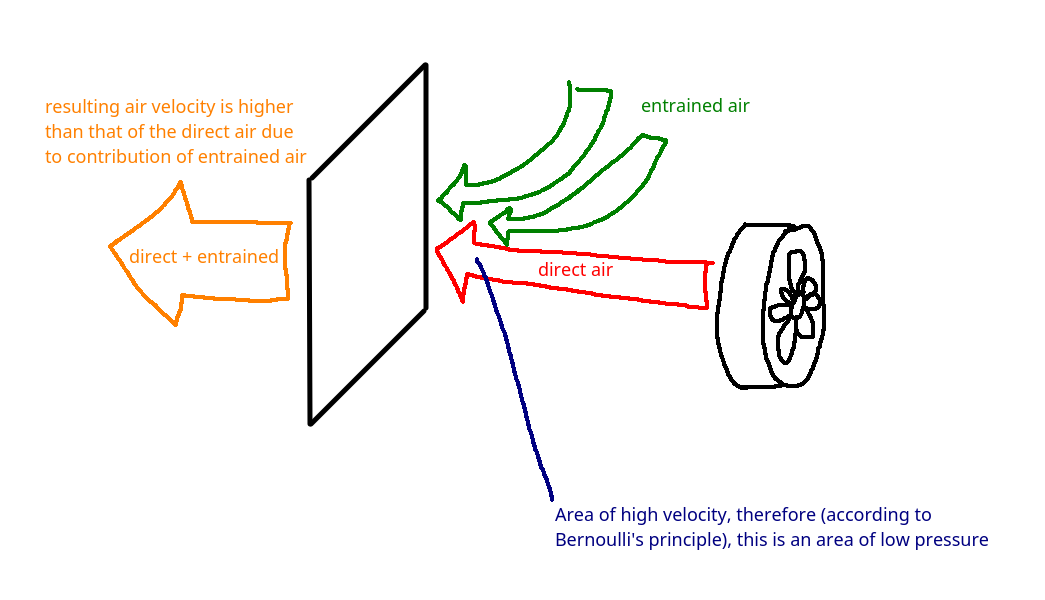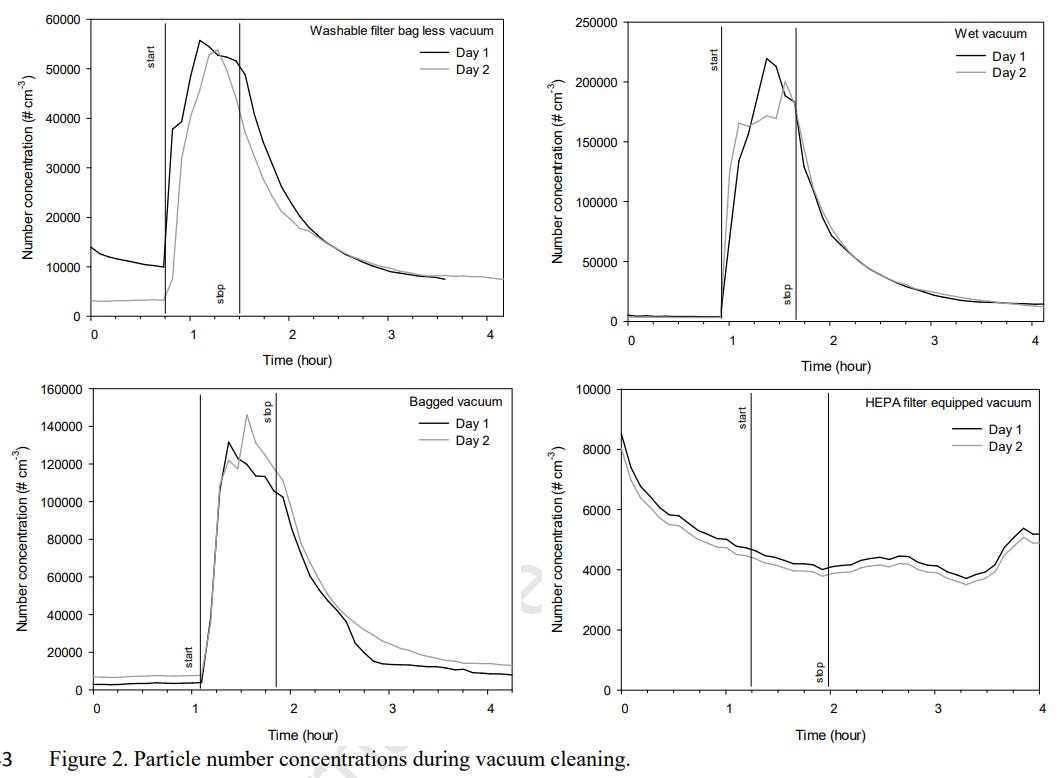Improve indoor air quality
Homes are more-tightly sealed than ever. This is great for energy efficiency, but it’s terrible for indoor air quality. A lack of fresh air ventilation allows a variety of toxic compounds to build-up in your home. For example, formaldehyde, a well-established carcinogen, is constantly being emitted from the materials that make up your home, as well as the furniture and various other objects inside of your home.1 Also, you have the issue of hormone-disrupting carcinogenic compounds known as perfluoroalkyl substances (PFAS).2 These are commonly used in stain resistant rugs, carpets, and furniture fabric. Then you have numerous other volatile organic compounds (VOCs) that arise during the cooking of food, from cleaning products, from paint on your walls, air fresheners, and personal care products.3 You also have the issue of carbon dioxide, which comes from the occupants in your home. CO2 levels above 1000 ppm have been associated with cognitive impairment, disrupted sleep, high blood pressure, and a variety of other adverse health effects.4567891011 Finally, you have gas stoves. These emit a panoply of air pollutants, including carbon monoxide, carbon dioxide, methane, benzene, formaldehyde, nitrous oxide, and nitrogen dioxide.12
Indoor air pollution in general has also been linked to an increased risk of asthma in children and sleep apnea in adults.13
One way to improve indoor air quality is to have installed an energy recovery ventilation (ERV) system or a heat recovery ventilation (HRV) system as part of your HVAC. These systems bring a constant supply of fresh air into your home in an energy efficient manner. The ERV is generally better than the HRV, since it brings in less humidity in humid climates. These units are best installed at the time the house is built. Unfortunately, they are expensive to retrofit into an already existing home. They also have a propensity to colonize mold inside the unit itself.14 Purchasing a unit with a MERV 13 air filter, such as the Santa Fe brand, may help prevent colonization, but I have not seen this specifically tested.
Alternatively you can have installed a whole house dehumidifier with fresh air intake. These units have a simpler design that can be attached to your existing HVAC. Some units are able to operate year-round, even when you do not need dehumidification. Again, get one with a MERV 13 filter to help prevent the colonization of mold, and/or be sure to clean your unit regularly.
Of course, you can always just open your windows if the weather is seasonable, and if your outdoor air quality is not terrible.
Even if the weather is unseasonable, you can still bring in fresh air in an energy efficient manner by doing it very quickly. Place a high powered fan a couple feet inside of a window, blowing the air from inside your home to the outside. At the same time, open at least one other window to allow fresh air to come in, preferably on the other side or your house and/or on a different level. Ten to fifteen minutes is probably all you will need. You want the fan to be located a couple feet interior to the window, rather than inside the window frame itself, in order to take advantage of Bernoulli’s principle:
During warmer months, place your outward-blowing fan in an upstairs window and bring in fresh air from a downstairs window in order to take advantage of the stack effect, whereby the tendency for hot air to rise will further enhance the speed of air exchange. During colder months, do the opposite.
By performing this air exchange quickly, you can rely on the internal contents of your home to serve as a temperature and humidity sink, preventing any wide fluctuations. An analogy I would draw would be opening a refrigerator door. When you open your refrigerator door, a lot of the warm air from your kitchen floods in, and a lot of the cold air from your refrigerator floods out. If fact, most of the air is probably exchanged in just a few seconds. However, once you close the door, the temperature inside your refrigerator quickly returns to optimal. Why? Because the contents of your refrigerator are still at an optimal temperature and they quickly re-cool the air once the door is closed. Contrast this with leaving your refrigerator door open just a crack, but for a longer period of time. In this latter case, your refrigerator motor will constantly struggle, and probably fail to maintain a proper temperature.
I perform the above-described rapid air exchange right before bed, and then again first thing in the morning. These are also the times when outdoor ozone levels tend to be the lowest,15 yet another contaminant you don’t want inside your home.
Another tip is to keep your bedroom door open at night while you are sleeping to help reduce the build-up of CO2 in the room. Another tip is to circulate the air by turning on a ceiling fan or floor fan. This will reduce the concentration of CO2 in the immediate vicinity of your head, which tends to be very high, due to your own exhaled carbon dioxide:16
When you are up and moving around inside your home or when you are outside this is less of an issue, as your “CO2 bubble” will be broken up by air currents. However, when you are sitting or sleeping indoors, it can be much more of a problem. Using a fan to create a light breeze around you can reduce your inhaled CO2 by a couple hundred ppm.17
Some experts recommend accomplishing the same by putting your HVAC fan on “continuous” instead of “auto” to help circulate the air in your home in general. I think this is fine during heating season, but you should avoid doing this during cooling season. During cooling season, it is important that your HVAC fan cycle on and off to help the moisture to drain from the condenser coils inside your HVAC unit into the drain pan and out of your home. If you put your HVAC fan on “continuous” you will be recirculating more of this moisture.
Another point to be made is that some of the adverse health effects associated with high indoor CO2 levels may not be from the CO2 itself, but rather from various other organic compounds emitted by our bodies, so-called “bioeffluents,” including aldehydes, hydrocarbons, ketones, ozone reaction products, and ammonia.1819 CO2 may just be a proxy for these other compounds.
You can test the quality of the air in your home by using a couple different monitors. WapoRich makes a good monitor for formaldehyde and VOCs. Aranet makes a good monitor for CO2. Using these monitors, I found that my tightly-sealed home frequently had high levels of VOCs, and it frequently had CO2 levels above 1300 ppm, peaking at about 2000 ppm in my bedroom at night. (At night, CO2 levels should ideally stay below 800 ppm.)20 I noticed that this problem was significantly worse in the summer, when even fewer outside drafts entered my home. By taking the above-described steps, I quantitatively improved the ambient CO2 levels, qualitatively made the air in my home feel much fresher, and noticeably improved my sleep.
Another aspect of air quality is removing dust, pollen, mold, and other particulate matter. A good HEPA filter is a good start. Rather than putting a HEPA filter on your HVAC, which can limit HVAC performance, I prefer a separate stand-alone unit. AirDoctor makes great air purifiers. They are quiet, and they have an accurate sensor that will increase airflow when they detect more particles in the air. When my air purifier starts to crank up, I know it’s time to dust my house!
I also recommend using a vacuum cleaner equipped with a HEPA filter. Such a vacuum will spew many fewer particles into the air:21
You should also dust your house frequently. House dust is not only an irritant to your airways, but it almost always contains hormone disrupting chemicals.22 It also serves as food for mold and mildew.
The best protocol with regard to cleaning hard floors is to vacuum and then wet mop them once a week. The vacuuming will get up the large particles so your mop is not saturated. Then the wet mop will more deeply clean. Wet mopping will help prevent dust and mold spores from adhering to the surface during the week, allowing your air filters to work better. I recommend a disposable microfiber dust mop that has been moistened (but not drenched), with a solution containing 5 drops unscented detergent concentrate per quart of water. Branch Basics makes a healthy detergent. During the week you can perform additional vacuuming and dry dust mopping of your hard floors as needed. (Shout out to the “Healthy Home Guide” YouTube channel as my source for this protocol.)
The best protocol with regard to cleaning carpet is to rip it out of your home and throw it in the garbage. As mentioned above, most carpet contains hormone-disrupting PFAS compounds.2324
Finally, there is the issue of humidity. Ideal indoor humidity is 40-45%. Below this level, and your airways may start to feel dry, and it may increase your risk of airborne infection.25 Above this level, and you will potentially increase the amount of allergenic mites and mold in your home.26 With regard to the latter, the dew point is actually a better measure, especially if you have a ducted HVAC unit. You see, the issue with mold growth is not so much the humidity that is in the air, but the tendency for that humidity to condense on surfaces. During cooling season the cooler air inside the ducts can cause condensation outside the ducts and on the adjacent walls. (Ever seen condensation and/or mold on the wall near one of your registers?) During heating season, the cooler air outside the ducts can cause condensation inside the ducts, especially if those ducts are not properly insulated. In either season, the dew point, which is a function of both temperature and humidity, will give you a better measure of this propensity. You can use a dew point calculator online, or download an app on your phone. All you will need to input is the temperature and the humidity level inside your home. The Aranet CO2 monitor mentioned above also provides these numbers, so it’s a great all-in-one device. During cooling season, you want to keep the dew point in your home less than 55 degrees Fahrenheit. If your readings are above this, you may need to purchase a supplemental dehumidifier. During heating season, you want to keep the dew point in your home less than 45 degrees Fahrenheit. This probably won’t be an issue unless you have a whole-house humidifier. If you have one of these, don’t overdo it!
https://www.ncbi.nlm.nih.gov/books/NBK138711/
https://pubmed.ncbi.nlm.nih.gov/35359817/
https://pubmed.ncbi.nlm.nih.gov/35886604/
https://pmc.ncbi.nlm.nih.gov/articles/PMC7701242/
https://pmc.ncbi.nlm.nih.gov/articles/PMC3548274/
https://pubmed.ncbi.nlm.nih.gov/32979003/
https://iopscience.iop.org/article/10.1088/1757-899X/997/1/012137
https://pubmed.ncbi.nlm.nih.gov/6814945/
https://pubmed.ncbi.nlm.nih.gov/26865538/
https://www.nature.com/articles/s41893-019-0323-1
https://www.sciencedirect.com/science/article/abs/pii/S0360132323004092
https://pmc.ncbi.nlm.nih.gov/articles/PMC10901287/
https://pmc.ncbi.nlm.nih.gov/articles/PMC6394120/
https://www.sciencedirect.com/science/article/abs/pii/S2352710224019922
https://www.sciencedirect.com/science/article/pii/S0047272723000877
https://pubmed.ncbi.nlm.nih.gov/9261495/
https://www.sciencedirect.com/science/article/abs/pii/S2352710218310969
https://pubmed.ncbi.nlm.nih.gov/26825447/
https://pmc.ncbi.nlm.nih.gov/articles/PMC5638674/
https://www.aivc.org/resource/effect-co2-nocturnal-restlessness-alzheimer-patient
https://www.sciencedirect.com/science/article/abs/pii/S036013232030439X?via%3Dihub
https://pubmed.ncbi.nlm.nih.gov/36828075/
https://pmc.ncbi.nlm.nih.gov/articles/PMC8104467/
https://www.sciencedirect.com/science/article/abs/pii/S0045653520309644
https://pubmed.ncbi.nlm.nih.gov/38154254/
https://pmc.ncbi.nlm.nih.gov/articles/PMC1474709/




